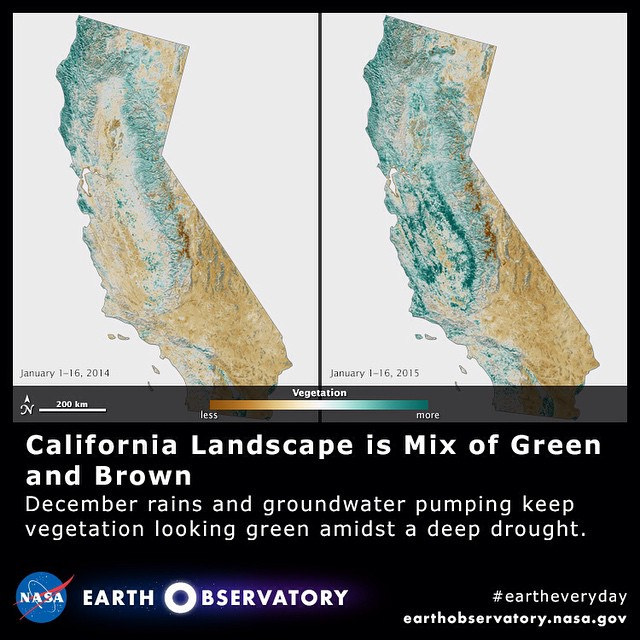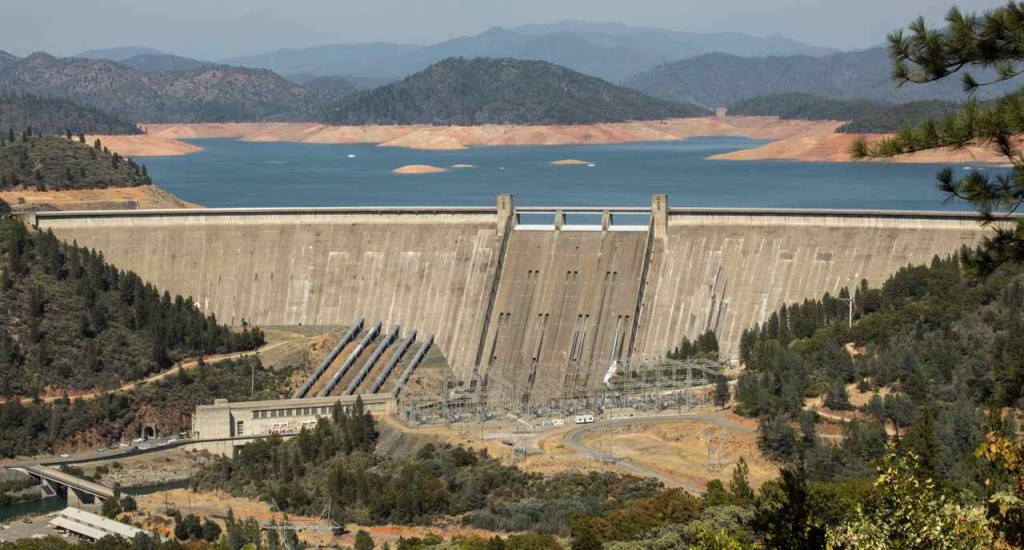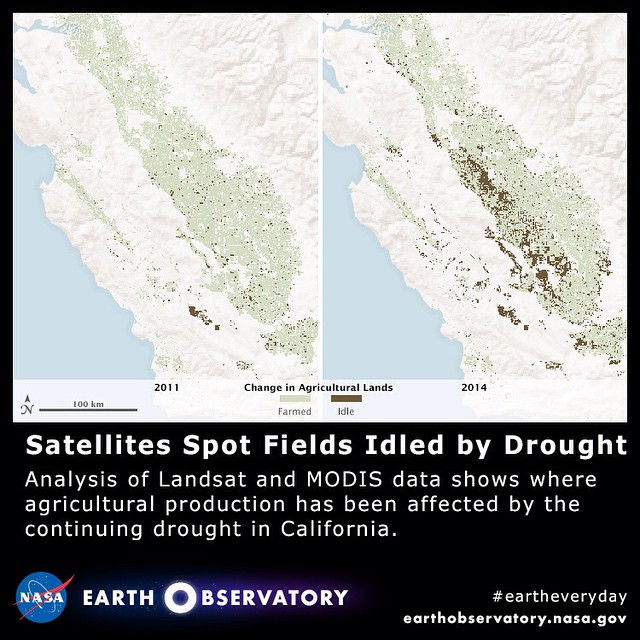As the Northeast exits one of the snowiest and coldest winters in recent memory, the opposite coast just recorded its hottest winter on record.
The end of winter similarly coincides with the close of the rainy season in California, a period in which the state tends to get close to 90% of it’s water. However, after a particularly dry and hot winter, California is poised to enter its fourth year of severe drought across the state, with an estimated 80% of the state under extreme conditions. So what does this mean for the state of food production, both nationally and worldwide?
California is the world’s fifth largest supplier of food, with a recent UC Davis study detailing how California would be the world’s ninth largest agricultural economy on its own.

Photo courtesy of NASA’s Earth Observatory/Flickr
The Golden State is the nation’s top dairy producer, and grows half the country’s fruits, vegetables and nuts. Many household staples, including tomatoes, carrots, broccoli, almonds, walnuts, grapes, olives, artichokes, lemons, pistachios and figs, are grown almost exclusively in California.
Last year, after almost 99% of the agriculture experienced severe, extreme or exceptional drought, the state suffered an estimated $1.5 billion in losses.
While high-value food prices are often driven more by market demand than by drought conditions, consumers can still see rising food prices in the coming months and years. Beef and pork prices are up almost 25% since last year, while dairy is at an all-time high of $24.43, largely due to water shortages necessary for growing cattle feed and pasture.

Photo courtesy of Dan Brekke/Flickr
Almonds, of which California grows over four-fifths of the global crop, are up to over $3 a pound.
Over 500,000 acres of orange, lemon and olive trees will be bulldozed this year due to lack of water, which has reverberating effects on everything thing from supply and end prices, to employment up and down the supply chain. Farmers can now receive more money to sell water they receive from regional agencies than to plant crops, potentially impacting global supply of staple crops.
A study from Canada’s British Columbia noted fruit and vegetable prices have likely increased by 34% due to falling supply from California. The United States Department of Agriculture, however, more modestly notes that supermarket prices will increase 2-3%, with the caveat that “severe weather events could potentially drive up food prices beyond the current forecasts.” As the report notes, “in particular, the ongoing drought in California could have large and lasting effects on fruit, vegetable, dairy and egg prices.”

Photo courtesy of NASA’s Earth Observatory/Flickr
Perhaps the most devastating news comes from wine retailers. According to an online California wine retailer, “the scarcity of water will likely push up prices for wines, especially some of the cheaper ones.”
As global temperatures continue to rise, the threat of drought and water shortage poses increasingly prevalent risks for farmers, and thus the global food supply. And if you’re not too worried about supply, how about taste? The University of Melbourne just released a report suggesting higher temperatures will adversely impact the flavor of fruits and vegetables, from carrots and onions to raspberries and even chocolate.

